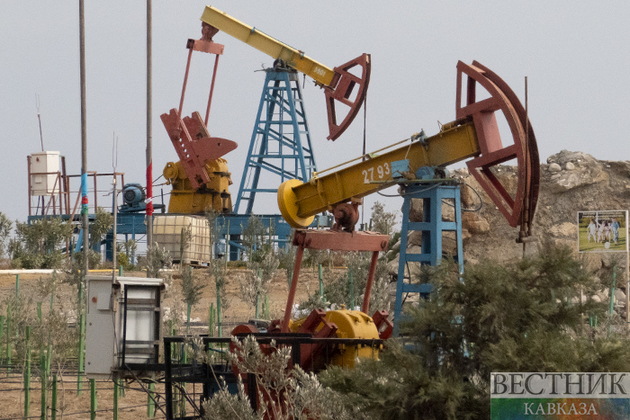The Organization of the Petroleum Exporting Countries Plus (OPEC+) crude production fell in March for the first time in more than a year with Western sanctions hitting Russia’s oil flows, and disruptions in Kazakhstan and Libya also taking its toll on output, Capital.com writes.
That’s according to the latest S&P Global Commodity Insights survey, published on Thursday, which found OPEC’s 13 members raised output by 60,000 barrels per day (bpd) to 28.73 million bpd. However, it was more than offset by a 160,000 bpd decline by the bloc’s nine allies, who pumped 13.91 million bpd. “With the net decline of 100,000 bpd, the widening gap between the OPEC+ production and quotas jumped to a record-high 1.24 million bpd, casting further doubt on the group’s ability to meet growing global oil demand, which many analysts expect will return to pre-pandemic levels in 2022,” S&P analysts Herman Wang and Rosemary Griffin said. S&P pointed out that the drop was the first since February 2021, when Saudi Arabia instituted a unilateral voluntary one million bpd cut to help stabilise the market as a result of the Covid-19 pandemic.
Will supply concerns raise the oil price?
S&P said concerns over OPEC+ production capabilities, in combination with the Russia–Ukraine crisis and recovering oil demand, have helped lift the Platts Dated Brent benchmark to nearly $140 a barrel in recent weeks. Although it dropped to $98.28 a barrel April 7 as the International Energy Agency [IEA] announced a 120-million-barrel stock release from strategic petroleum reserves, led by the US.
Capital.com’s chief market strategist, David Jones, is of the view that we have already seen the OPEC+ production dip factored into the price. Jones said on Friday: “It's probably no surprise that OPEC+ supply dropped and given the volatility in the oil price in March, it was probably expectations around just that which ended up being another of the catalysts for driving oil higher. “So for me, that effect has been and gone. With West Texas Intermediate crude back below $100 a barrel, I think we are set for more ‘normal’ trading conditions in the months ahead and will see oil react more in line with what is going on with the global economy.”
Energy and economic analyst Osama Rizvi of Primary Vision Network, meanwhile, was of the view that a dip in production is difficult to forecast. “There are too many moving pieces. I still believe any news regarding OPEC+ production can cause wild swings in the markets. The markets are overreacting to all bullish/bearish news,” he said.
Is OPEC+ meeting its quotas?
The group has stuck to its plan of gradually raising quotas by 400,000 bpd each month, despite calls from the US, India, Japan and other major oil-consuming nations to accelerate supplies and help ease soaring energy prices. However, several countries have not hit their output targets in months. “March’s shortfall resulted in a compliance figure of 148% for the 19 members with quotas, according to S&P Global calculations. Iran, Libya and Venezuela are exempt from quotas under the OPEC+ agreement,” Wang and Griffin added. Meanwhile, Rizvi said the recent rise in oil prices can, as happened in 2017–2018, incentivise OPEC members to further raise their production as Covid-19 depleted many reserves and exhausted their budgets. “However, that will serve to be a harmful strategy in the longer run as it will only increase production and reduce prices,” he added.
Oil production: Where is it hitting the hardest?
S&P said OPEC member Saudi Arabia is one of the handful of countries that appears to hold significant spare capacity and managed to keep its production steady in March at 10.25 million bpd. Russia, meanwhile, saw its crude production fall to 10.04 million bpd, the survey found. “Many traders have stopped transacting with Russian commodities, and analysts expect production shut-ins to build up in April and May, though some flows are shifting to Asian customers. “Both Saudi Arabia and Russia had quotas of 10.33 million bpd for the month,” S&P said.
Meanwhile, the group noted that Kazakhstan had seen the biggest fall in production, with storm damage to the loading terminal of the Caspian Pipeline Consotium (CPC) pipeline causing major disruptions. “Kazakhstan output was 1.55 million bpd in March, and officials have warned of further impacts in April from the outage,” S&P noted.
Moreover, Libyan output fell 50,000 bpd in March. It followed the country's largest oil field, Sharara, being shut from 3–8 March because of civil unrest. Furthermore, another one of its oil fields, The Elephant field, is still offline due to sabotage, the analyst group said.
Venezuela’s and Iraq’s oil production had gained, with Iraq producing 4.34 million bpd, which was slightly under its quota of 4.37 million bpd. “The country brought back its giant West Qurna 2 field from maintenance about two weeks early in early March, and also saw its Nassiriya field disrupted for a few days at the start of the month because of protests. Sources and satellite data indicated considerable inventory builds.
“Venezuela posted a 40,000 bpd gain in March, the survey found, benefitting from the arrival of two cargoes of Iranian condensate that enabled a production rebound in the Orinoco Belt. Extracting the region’s extra-heavy crude requires diluent, which US sanctions have made it difficult for Venezuela to obtain, although Iran has been sending cargoes under a bilateral agreement,” S&P concluded.










